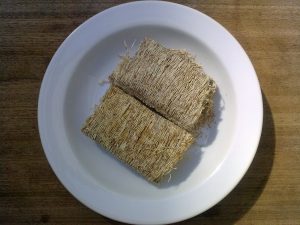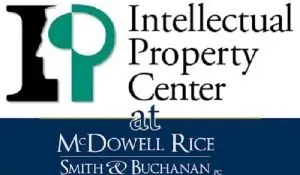Trademark Disputes and Unfair Competition
The Shredded Wheat Saga
The landmark case of Kellogg Co. v. National Biscuit Co. stands as a testament to the complexities surrounding trademark disputes and unfair competition claims. This legal battle, which spanned decades, revolved around the iconic shredded wheat cereal and the fierce rivalry between two industry giants. In 1893, a man named Henry Perky began making a pillow-shaped cereal which he called Shredded Whole Wheat. John Harvey Kellogg said that eating the cereal was like “eating a whisk broom,” and critics at the 1893 Chicago World’s Fair called it a “shredded doormat.” Surprisingly, the shredded doormat was popular.

After Perky died in 1908 and his two patents, on the biscuits and the machinery that made them, expired the Kellogg Company began selling a similar cereal. This move ignited a firestorm of legal battles and in 1930, the National Biscuit Company, a successor of Perky’s company, filed a lawsuit against the Kellogg Company, accusing Kellogg of unfair competition and trademark infringement.
The Crux of the Shredded Wheat Dispute
Nabisco argued that Kellogg’s shredded wheat product, which closely resembled their own in shape and appearance, constituted unfair competition and an attempt to capitalize on Nabisco’s established goodwill and brand recognition. They claimed that the term “Shredded Wheat” had acquired a secondary meaning, effectively becoming a trademark, and that Kellogg’s use of it was misleading consumers. However, the Supreme Court ultimately ruled in favor of Kellogg, establishing a crucial precedent in trademark law. The Court held that the term “Shredded Wheat” was descriptive and generic, and therefore not eligible for trademark protection. Additionally, the Court affirmed that once a patent expires, competitors have the right to copy the product’s functional design and sell it under the same name, as long as they do not engage in deceptive practices or “passing off” their goods as those of the original manufacturer.
Unfair Competition Claims: Navigating the Intricate Legal Landscape
Unfair competition claims encompass a broad range of deceptive or wrongful business practices that cause economic harm to other businesses or individuals in the commercial realm. These claims aim to maintain a fair and transparent market by prohibiting practices that mislead consumers and unfairly impact competitors. At the core of unfair competition claims lies the concept of consumer confusion, which is a crucial element in many of these cases.
Trademark Rights
Trademark law functions as a type of unfair competition law and protects businesses against competitors stealing customers or harming the goodwill of the business by creating confusion.
Trademark law covers a business’s brand, slogan, logo and packaging and it may be enforced federally (under the Lanham Act) or on a state-by-state basis under existing state laws. If a business is likely to loose customers or looses customers as a result of confusion between competitors, then the business may be able to bring a trademark infringement action under the Lanham Act.
In general, the first user (referred to as the senior user) has superior trademark rights over the later user (referred to as a junior user). If necessary, the senior user can file a trademark lawsuit to stop the junior user from causing confusion. This confusion can be as to source, affiliation, sponsorship and endorsement between the competing companies and it can occur before the sale, at the time of the sale or after the sale has occurred.
Trademark Infringement: A Common Unfair Competition Claim
One of the most prevalent forms of unfair competition is trademark infringement. This occurs when a junior user uses a trademark that is confusingly similar to a senior user’s trademark, leading consumers to mistakenly associate the products or services with the wrong source. To establish a trademark infringement claim, the plaintiff must prove:
- Ownership of a valid and legally protectable trademark.
- The defendant’s unauthorized use of a mark that is confusingly similar to the plaintiff’s trademark.
- The defendant’s use of the mark is likely to cause consumer confusion regarding the source, affiliation, or sponsorship of the goods or services
The Genericide Defense: Protecting Generic Terms
In defending against trademark infringement claims, businesses may invoke the “genericide” defense, which argues that the alleged trademark has become a generic term and lost its ability to identify a specific source. The trademark genericide defense was successfully employed in the Kellogg Co. v. National Biscuit Co., where the Supreme Court ruled that the term “Shredded Wheat” had become a generic descriptor for the cereal product and could not be monopolized by a single company.
Other Unfair Competition Claims
Beyond trademark infringement, businesses may pursue various other unfair competition claims, including:
- False advertising: Making false or misleading statements about a product or service that deceive consumers and harm competitors.
- Trade secret misappropriation: Unlawfully acquiring, using, or disclosing a company’s valuable trade secrets, such as confidential business information or proprietary processes.
- Trade libel or commercial disparagement: Making false and defamatory statements about a competitor’s products or services that harm their reputation and business interests.
- Breach of restrictive covenants: Violating non-compete, non-solicitation, or confidentiality agreements by former employees or business partners.
Establishing Unfair Competition Claims
In general, to prevail in an unfair competition claim, plaintiffs must typically demonstrate the following elements:
- The defendant engaged in deceptive or wrongful conduct in the course of business.
- The defendant’s conduct caused actual or likely consumer confusion or deception.
- The plaintiff suffered economic injury or damages as a result of the defendant’s conduct.
It is important to note that the specific elements and requirements for unfair competition claims may vary depending on the jurisdiction and the specific type of claim being pursued.
Remedies and Damages
If a plaintiff successfully establishes an unfair competition claim, the court may award various remedies, including injunctive relief to stop the infringing or deceptive conduct, monetary damages to compensate for losses, and in some cases, punitive damages for willful or egregious violations. Unfair competition litigation can be complex and highly fact-specific, often involving intricate legal analyses and evidentiary requirements. Businesses facing unfair competition claims or seeking to protect their rights against unfair practices should consult with experienced legal counsel to navigate the nuances of these claims and develop an effective litigation strategy.
Implications and Lessons Learned in Kellogg Co. v. National Biscuit Co.
The Kellogg Co. v. National Biscuit Co. case highlighted the delicate balance between protecting intellectual property rights and promoting fair competition. It underscored the importance of distinguishing between functional product designs, which cannot be monopolized after patent expiration, and distinctive trademarks that serve as source identifiers. This case also shed light on the concept of “genericide,” where a once-distinctive trademark becomes so widely used that it loses its ability to identify a specific source and enters the public domain as a generic term. The Court’s ruling effectively prevented Nabisco from monopolizing the term “Shredded Wheat,” which had become a common descriptor for the cereal product. Moreover, the case emphasized the significance of clear and prominent branding to avoid consumer confusion and allegations of unfair competition. Kellogg’s prominent display of its brand name on packaging was deemed sufficient to mitigate any potential confusion with Nabisco’s products. In the ever-evolving landscape of intellectual property law, the Kellogg Co. v. National Biscuit Co. case remains a seminal decision, offering valuable insights into the intricate interplay between trademarks, patents, and fair competition practices.
If you have questions about a how trademark disputes, unfair competition or trademark genericide apply to your business, contact us.

